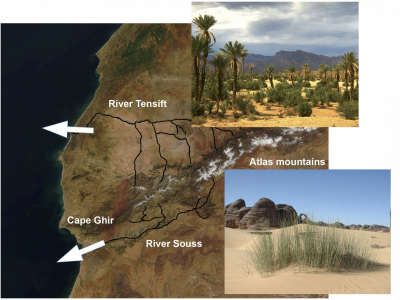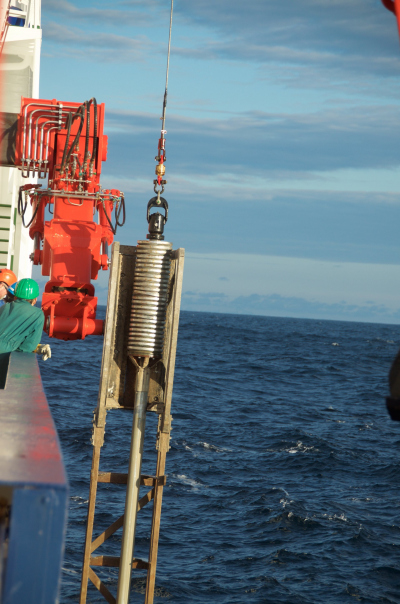- Home
- Karin Zonneveld
- Expeditions
- R.V. METEOR Reise M165 PASTOSI
R.V. METEOR Reise M165 PASTOSI
Cruise M165 is a special cruise. During this cruise part of the research activities of the scientific program "PASTOSI" (PArticles from Source TO SInk off northwest Africa) will be carried out. This research program was planned to be executed during METEOR cruise M163 planned for for April 2020 that unfortunately had to be cancelled due to the Covid-19 Pandemic. Fortunately intense cooperation between and flexability of the German Science Foundation, the "Leitstelle Deutscha Forschungsschiffe" and the shipping agend resulted in the possibility to execute part of the originally planned program.
The PASTOSI reseqrch activities concentratates on the many aspects of influencing processes and mechanisms that shape the organic-matter and (bio-)mineral vertical particulate flux. It focuss on the production, the vertical and lateral displacement of particles and their transformation as well as the influence these aspects have on selected environmental proxy signals in marine archives.
During the cruise PASTOSI Part 1. groups from the MARUM at the University of Bremen, Alfred-Wegener-Institute in Bremerhaven, will perform joint investigations that notably will be performed within the scope of the EXC research Unit "The Ocean Floor as Receiver".
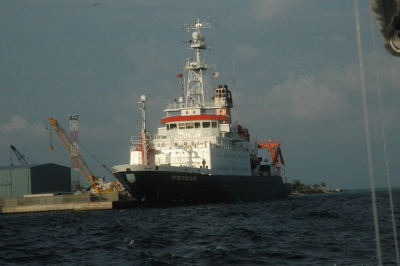
Planned Stations and Cruise Track
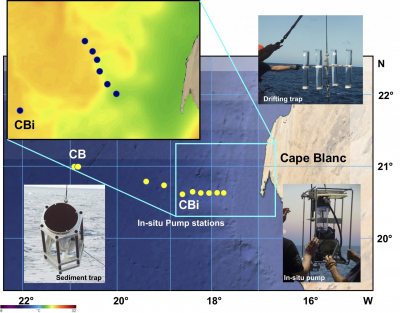
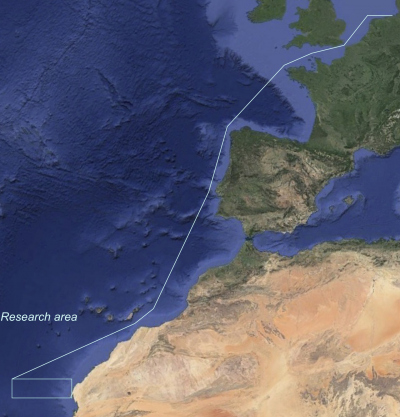
Part 1. Emden - Emden (03.08.2020 - 06.09.2020)
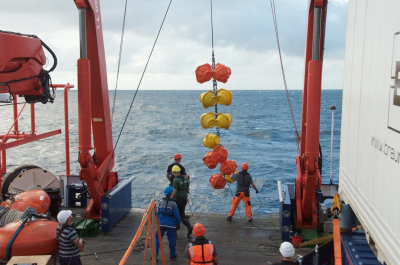
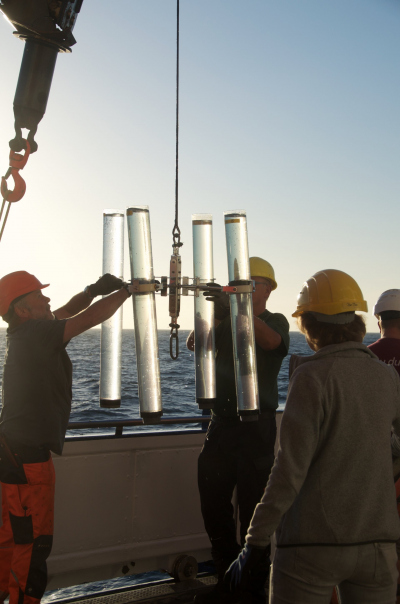
Activities will be carried out in the upwelling area off Cape Blanc. Research focus lies on the production, transport and alteration of marine-derived particles and their proxy signals in relationship to upwelling succession, ambiend redox conditions and presence of various nepheloid layers. For this particles will be collected in the water column by drifting traps and in-situ pumps that will be deployed in an active upwelling cell. Results shall be compared to long-term flux records in sediment-trap series. Sediment traps will be serviced.
In Detail the following aims are being adressed:
- Determine carbon flux attenuation in the epi- and masopelagic and get a better understanding of the major underlying processes.
- Study of the influence of zooplankton flux feeding on carbon flux and remineralisation.
- Determine the rate of production as well as as vertical and lateral transport of different POM particles of known origin (e.g. coccolithophorids, dinoflagellate cysts, pollen/spores, planktic foraminifera) in relationship to upwelling dynamics and the presence and location of nepheloid layers.
- Determine the alteration of organic matter based proxy signals in relationship to transportation and transformation of their proxy carriers in the water column, notably within nepheloid layers.
- Determination of the relationship between DOM and POM, their age as well as of DOM/POM based proxy signals in relationship to upwelling intensity, redox conditions and the presence of nepheloid layers.
Part 2. Somewhere in the future
During Part 2 investigations are planned on the Mauretanian and Moroccan shelfs. The latter near the Tensift and Souss river mouths.
These research activities will be performed by cooperation of research groups from the MARUM at the University of Bremen, the Alfred-Wegener-Institute in Bremerhaven, the Max-Plank Institutes for marine Microbiology and Biogeochemistry, the Universit Ibn Zohr (Agadir, Morocco) and Sultan Moulay Slimaer (Beni Mellal, Morocco),
On the Mauretanian shelf,research activites will focus on the alteration of organic matter in permeable shelf sediments using advanced Lander techniques.
Focus of the research activities planned near near the Tensift and Souss river mouths. the lie on the investigation of proxies for terrestrial climate and land use and the proxy carrying particles.
In this research area the following specific aims are being addressed:
- Determine the transport trajectory of terrestrial organic and inorganic material offshore the Tensift and Souss river mouths.
- Investigate the transformations of the discharged terrestrial POM during vertical and horizontal displacement in the water column.
- Locate their nearshore depositional areas to recover high temporal resolution sedimentary archives to investigate anthropogenic and climate induced environmental change in southern Morocco over the last 2000 years.
